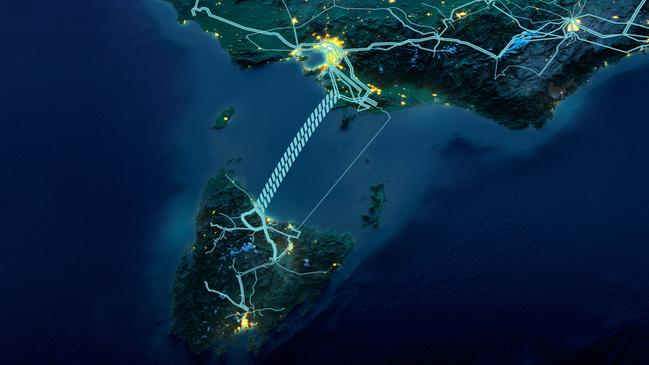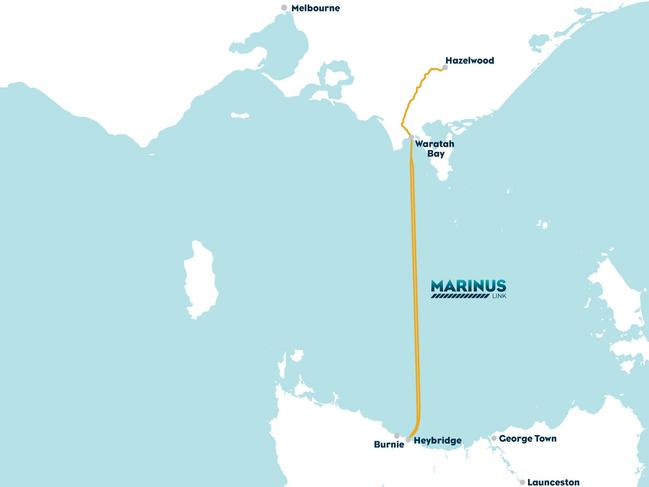Marinus link cost estimates up 17 per cent for stage one
The first stage of the Marinus Link project is set to be more expensive than first estimated — however it’s becoming clearer how much it could save Tassie households.

Tasmania
Don't miss out on the headlines from Tasmania. Followed categories will be added to My News.
The first stage of the Marinus Link Bass Strait electricity cable project is expected to cost $3.86b, a 17 per cent increase on earlier estimates, the company says.
Marinus Link said it had been provided with fresh modelling which shows typical households in both Tasmania and Victoria will save between $25 and $36 on average every year once the cable is operational.
The company has submitted its latest Revenue Proposal to the Australian Energy Regulator, which relates to the costs of constructing the Marinus Link project, while updated modelling shows Victorian and Tasmanian households will reap the benefits of the project.
Marinus Link’s Stage 1 total costs are forecast to be $3.86 billion, an increase of approximately 17 per cent compared to pretender completion estimates.
Construction is expected to begin in 2026 and be completed by 2030.

MLPL’s Interim CEO Dr Collette Burke said this cost estimate is consistent with trends seen across other Australian infrastructure projects, particularly transmission.
“The estimate reflects unprecedented demand for undersea cables, driven principally by demand in Europe as the world embraces the energy transition and manages the uncertainty created by international events,” Dr Burke said.
“MLPL has made significant progress in clarifying the costs of Marinus Link following the completion of competitive tender processes to secure suppliers for the submarine and land cables and the highly specialised converter station technology.”
Dr Burke emphasised the latest estimates provide the clearest picture yet of Marinus Link’s investment cost and benefits to electricity consumers.
“In addition to consumer and energy market benefits, Project Marinus stimulates regional economies in Gippsland and North West Tasmania, generating $2.4b in economic activity and nearly 2,400 jobs from Stage 1 alone.”
The AER will now review MLPL’s forecast capital expenditure for Marinus Link’s construction phase to ensure the project is consistent with the National Electricity Objective.
An updated consumer benefits analysis by FTI Consulting indicates on average, households in both Tasmania and Victoria will be better off after investing in Project Marinus.
Taking these savings and accounting for network costs, a typical household will save between $25 and $36 on average every year.
MLPL is owned by the Australian Government (49 per cent), the Victorian Government (33.3 per cent) and the Tasmanian Government (17.7 per cent).





